A raised bed cover is essential for protecting plants from harsh elements. A raised bed cover will keep the soil moist and warm, preventing frost damage and saving money on your garden bill. There are a few different types of raised bed covers available on the market, so choosing the right one is important. A raised bed cover is a tool used to increase the yields of your plants. Let’s check out how to use raised bed covers to protect plants.

Raised bed cover allows you to grow plants in soil closer to the surface, improving drainage and aeration. In turn, this results in larger and healthier plants. A raised bed cover may be the right solution to improve your plants’ yields. A raised garden bed is an easy and affordable way to add height, stability, and privacy to your garden. When choosing a raised garden bed cover, you should consider a few things to keep in mind. The first thing to consider is the climate where your garden will be located.
Some covers are designed to work in warm climates, while others may be more appropriate for cooler or winter climates. Next, consider what type of soil you will use in your garden. Some covers are made out of materials that are water resistant, allowing them to withstand rain and wet conditions without compromise. Others are made with a cloth material that will dry quickly, so you won’t need to worry about damaging it if it gets too wet outside. Finally, consider your space for a raised garden bed and what plants you would like to grow there.
How to use raised bed covers to protect plants
Protection from the elements
Raised beds are a great way to protect plants from the elements. A raised bed can be made from a variety of materials. Raised beds also allow for better air circulation around the plants, which can help reduce the risk of mildew and other fungus infections. A raised bed cover can help protect your plants from harsh weather conditions.
In case you missed it: 13 Best Cover Crops for Raised Beds and Why to Use Them
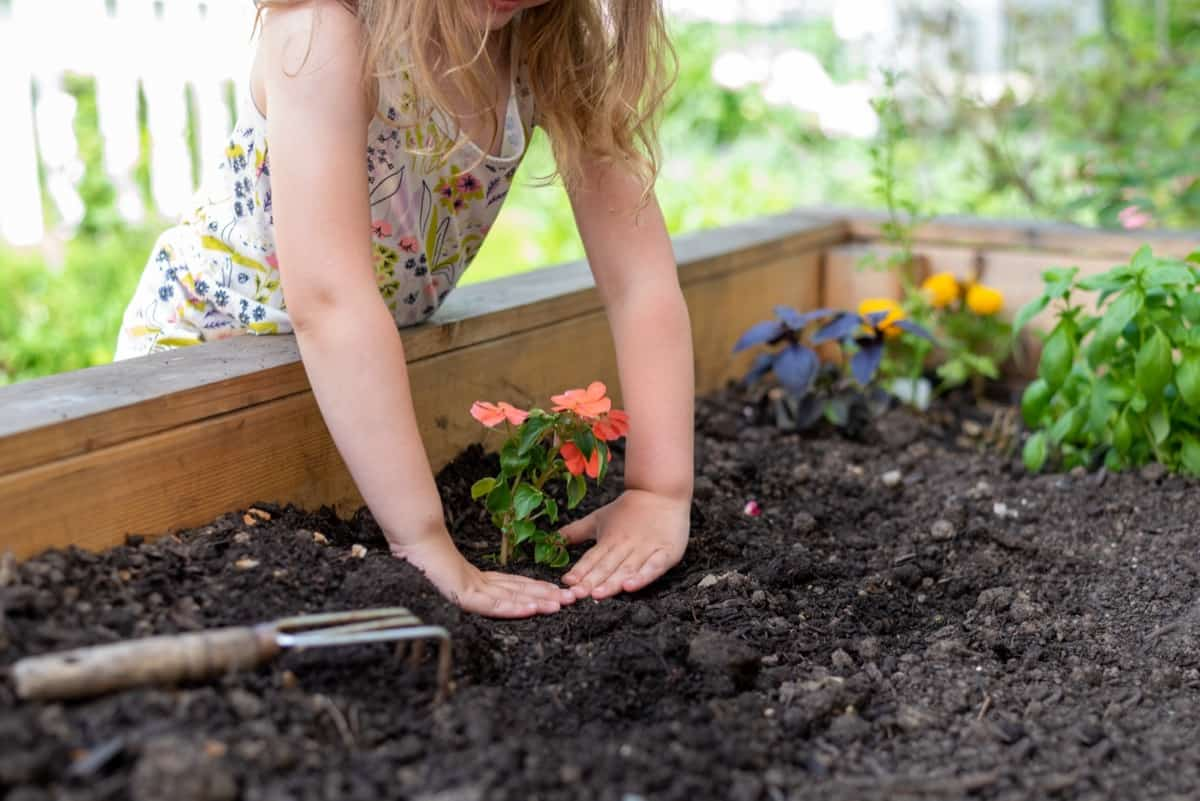
When it snows or rains hard, the soil’s surface will act as an insulator and keep the plant roots warm. In addition, a raised bed can also help protect plants from wind damage. Wind pushes water and mud around in all directions, damaging leaves, flowers, and branches on trees. A raised bed provides an extra barrier between your plant and these elements, which can help preserve your plants.
Protection from animals
A raised bed is the best way to protect plants from animals and insects. Animals will not be able to reach the plants or damage them, and the bed will also make it easier to care for your plants since they are not soil-covered. If you have chickens or other backyard pets, installing a raised bed may help keep them out of your garden.
Protection from pests and diseases
Many types of covers are available, so find one that is comfortable for you and your plants.
Insects don’t have access to the soil below the bed, so they can’t build up populations and spread disease. Additionally, when the bed is covered, the plants get more sunlight, which deters some pests (like aphids) from attacking in the first place. When soil is regularly wetted by rainfall or groundwater seepage through a permeable surface (such as a raised bed), it becomes an ideal breeding ground for mold and other organisms that can harm plants.
A raised bed cover insulates the soil and prevents this moisture buildup, allowing plants to absorb more water and stay healthier. Weeds will grow in open soil where they can reach down into the nutrient-rich subsoil. A raised bed cover filters out sunlight and keeps weeds at bay, reducing competition for resources between your plants and unwanted vegetation.
Types of garden bed cover frames
Wood
Wooden garden bed cover frames can be a great option if you want to add rustic charm to your gardening area. These frames are easy to make and require only a few simple tools. Wooden frames might be your best choice if you’re looking for a quick and affordable solution. To make a wooden frame, first, measure the size of your bed frame and buy the appropriate wood lumber. You’ll also need a saw, drill, screws, and nails.
Cut the lumber to the correct size and then sand it down smooth. Next, drill holes in each corner of the lumber and screw it together using screws. Finally, paint or stain the frame according to your preference and enjoy your new garden bed cover.
In case you missed it: How to Grow Peanuts in Raised Beds: Soil, Propagation, Planting, and Care
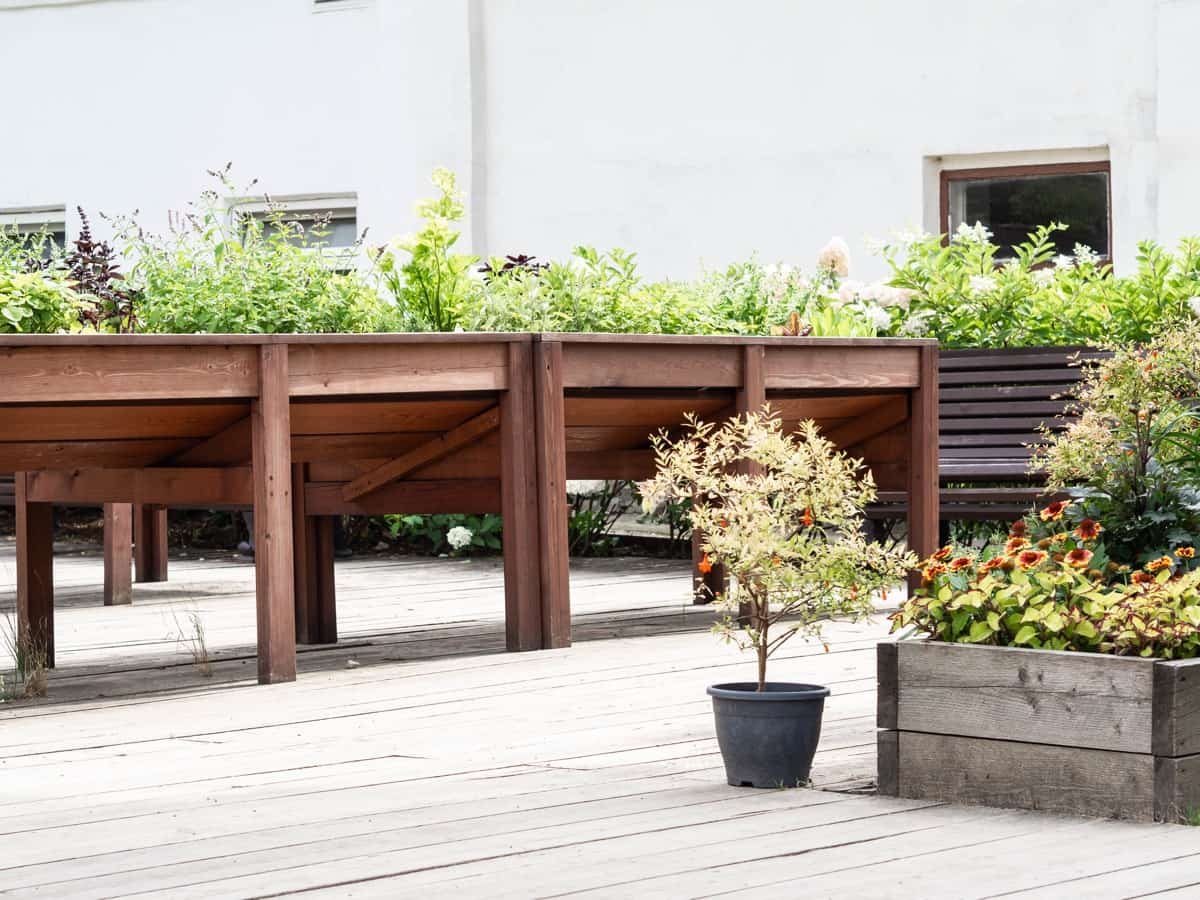
PVC
There are a few different types of garden bed cover frames that can be used to protect your plants from the elements. The benefits of using PVC garden bed cover frames are many. PVC is a durable material that can last many years and is easy to clean. Additionally, PVC is lightweight and easy to move and handle. Finally, PVC is available in various designs to find the perfect frame for your garden bed.
Metal
When selecting a garden bed cover frame, it is important to consider the material and construction of the frame.
- The galvanized steel frame is made from steel coated in a protective layer of zinc. The zinc coating makes the frame resistant to rust, making it a good choice for areas with a lot of moisture or exposure to weather elements. However, galvanized steel frames can be challenging to install due to their weight and size.
- Vinyl frames are made from a lightweight polymer coated in a protective layer of vinyl. This coating makes vinyl frames resistant to moisture and weather damage but can be easily damaged by abrasion or impact. Vinyl frames are also easy to install, though they may not be as strong as galvanized steel frames.
- Aluminum frames are one of the most popular options on the market because they are both lightweight and strong. Aluminum frames are also easy to install and come in various shapes and sizes to fit any garden bed. One downside of aluminum frames is that they can rust if not properly maintained.
Fabric
Another option for garden coverings is sheets of fabric such as cotton canvas or heavy-duty polyester fleece. These fabrics are heavier than plastic but lightweight enough to move around easily. They have a natural tendency to absorb moisture, so they are best used in areas with a lot of rainfall or humidity.
They also provide some degree of protection from the sun and wind, although they do not completely block out all sunlight or wind gusts. Fabric can be made from various materials, including cotton, linen, or synthetic fabrics. It’s essential to choose a fabric that is durable and resists moisture and pests. The downside to using fabric as a garden covering is that it tends to be more expensive than metal or wood sheeting.
In case you missed it: How to Start Home Gardening in Hawaii for Beginners: For Indoors, Outdoors, Raised Beds, Backyards, and Containers
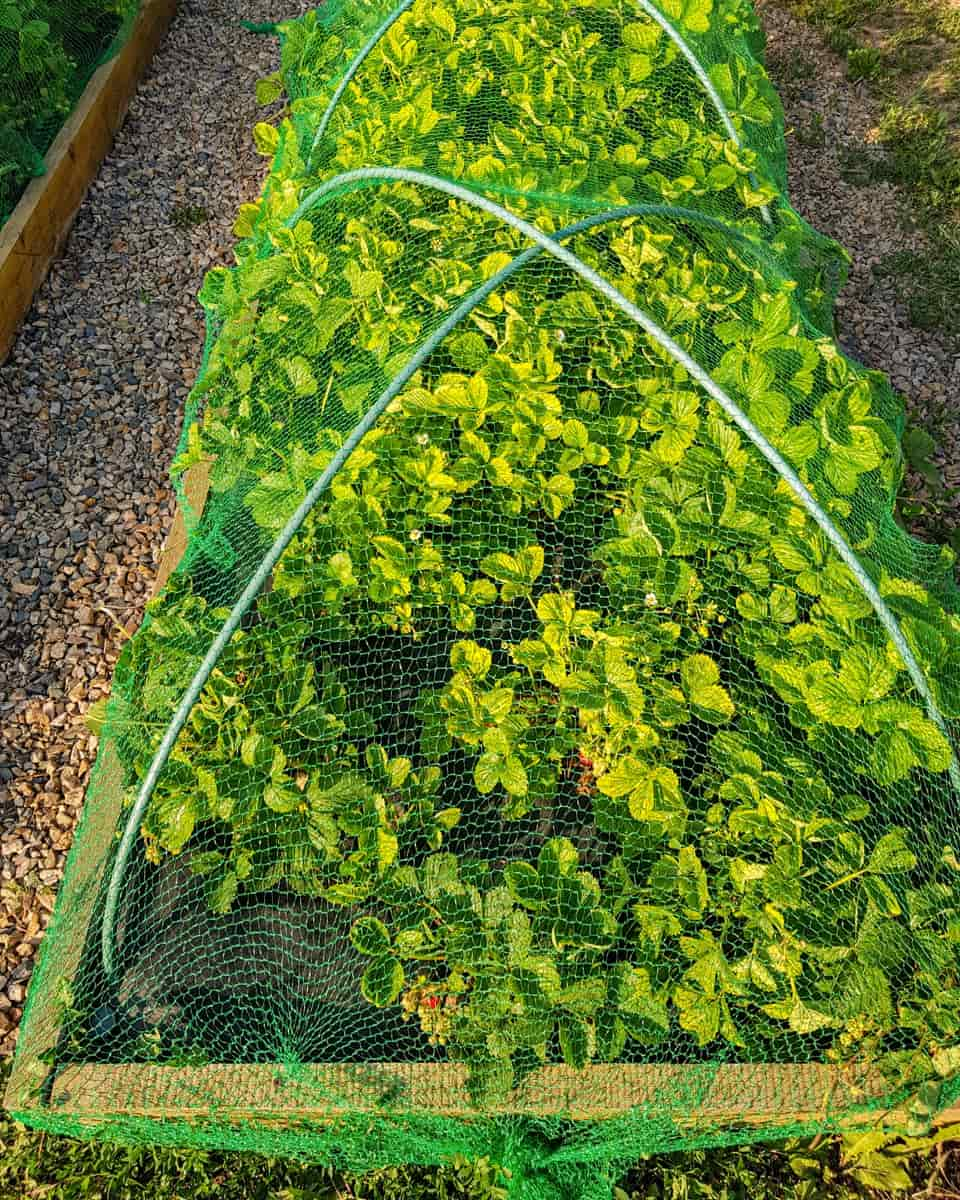
Types of garden coverings
Polyethylene sheeting
Polyethylene sheeting is a popular garden bed cover material because of its strength, durability, and water repellency. Polyethylene sheeting is available in various colors and patterns to match your garden’s design. To install the polyethylene sheeting, measure the length of the desired cover and cut the sheeting to that length. Make sure to align the long edges of the sheeting, so they are perfectly aligned. Then, you can use a staple gun to secure the long edges of the polyethylene sheeting together.
Shade cloth
Many types of garden bed covers can be used to keep your soil warm in the winter and cool in the summer. Shade cloth is a type of cover that can be used on beds that get a lot of sunlight. It works by reflecting sunlight away from the soil, preventing it from warming up and evaporating. This also prevents the soil from becoming too dry in the summer. Shade cloth can be made from various materials, including cotton, polyester, or netting. Some people prefer to make their shade cloth using fabric scraps, while others purchase pre-made clothes.
Choosing a suitable shade cloth for the conditions under which your garden will be used is important. For example, if your garden will be used in direct sunlight, you will need a shade cloth made out of brightly colored material to reflect sunlight away from the soil. If your garden is used during the night or periods of low light levels, you will need a darker shade cloth that helps to absorb light and retain moisture in the soil. Many different types and styles of shade cloth are available on the market today, so selecting one that fits your needs and preferences is important.
Mini hoop tunnels
Mini hoop tunnels are fun to add interest and movement to your garden bed. To make a mini hoop tunnel, start by cutting two pieces of wire about 18 inches long. Bend one end of each wire into a U-shape. Make sure the wires are close to each other but not touching. Then, wrap the wires around the post of your garden bed several times. Make sure the wires are tight against each other so they won’t come loose.
In case you missed it: How to Build a Pergola for Climbing Plants: A Beginners Guide
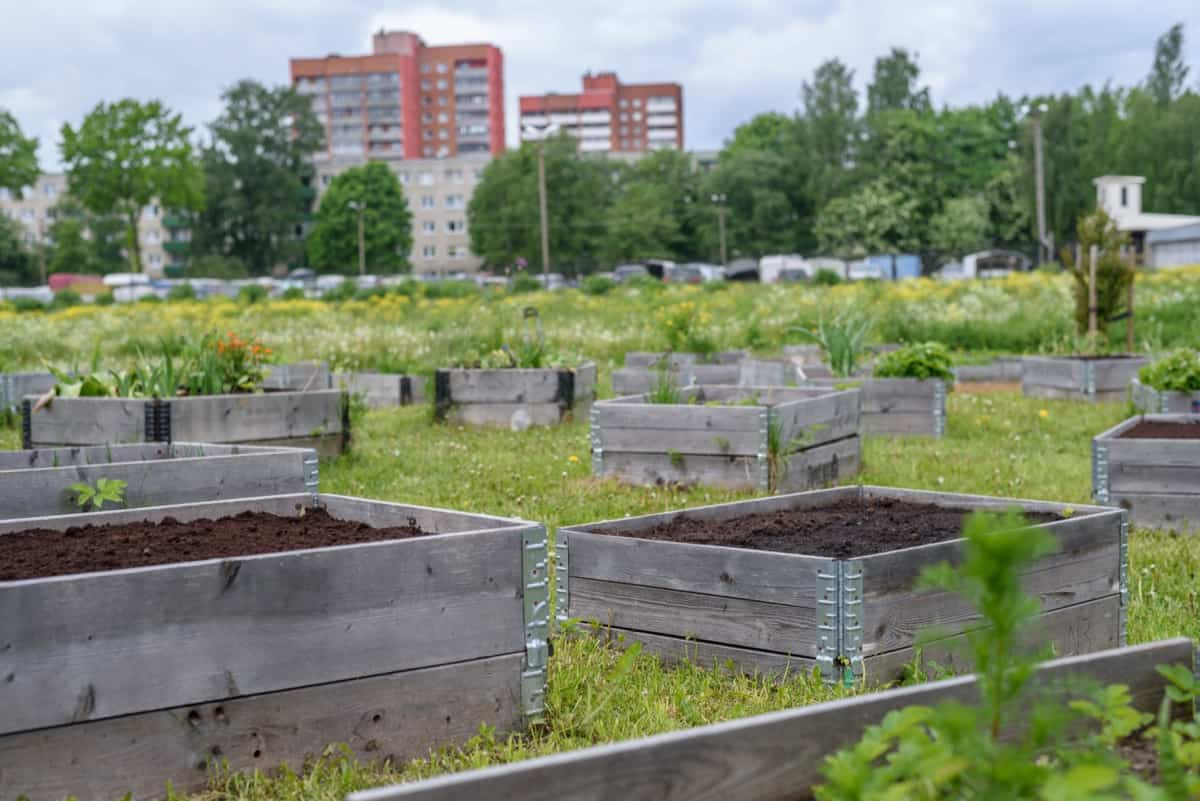
Cold frames
A cold frame is a garden structure made of glass, metal, or other transparent material in which plants are grown during winter. The term originally referred to a type of small greenhouse that was enclosed on all four sides. Nowadays, cold frames are used for various tasks, including growing vegetables and flowers in climates that would be unsuitable for them in other parts of the home or garden, providing protection from wind and rain, and helping to control planted space.
Cloches
Many different garden bed covers can be used to protect plants from the elements. Cloches differ in their shapes, materials, and construction methods, but they all keep rain or snow off the plants and soil while permitting air and light to reach the plants. They are often used to protect plants from the elements but can also be a source of privacy. Cloches can be made from fabric, plastic, or metal and can be attached to the ground or a frame. Several types of cloches are available, and each has its advantages and disadvantages.
In case you missed it: How to Grow and Care for Gladiolus Flowers: A Useful Guide for Beginners
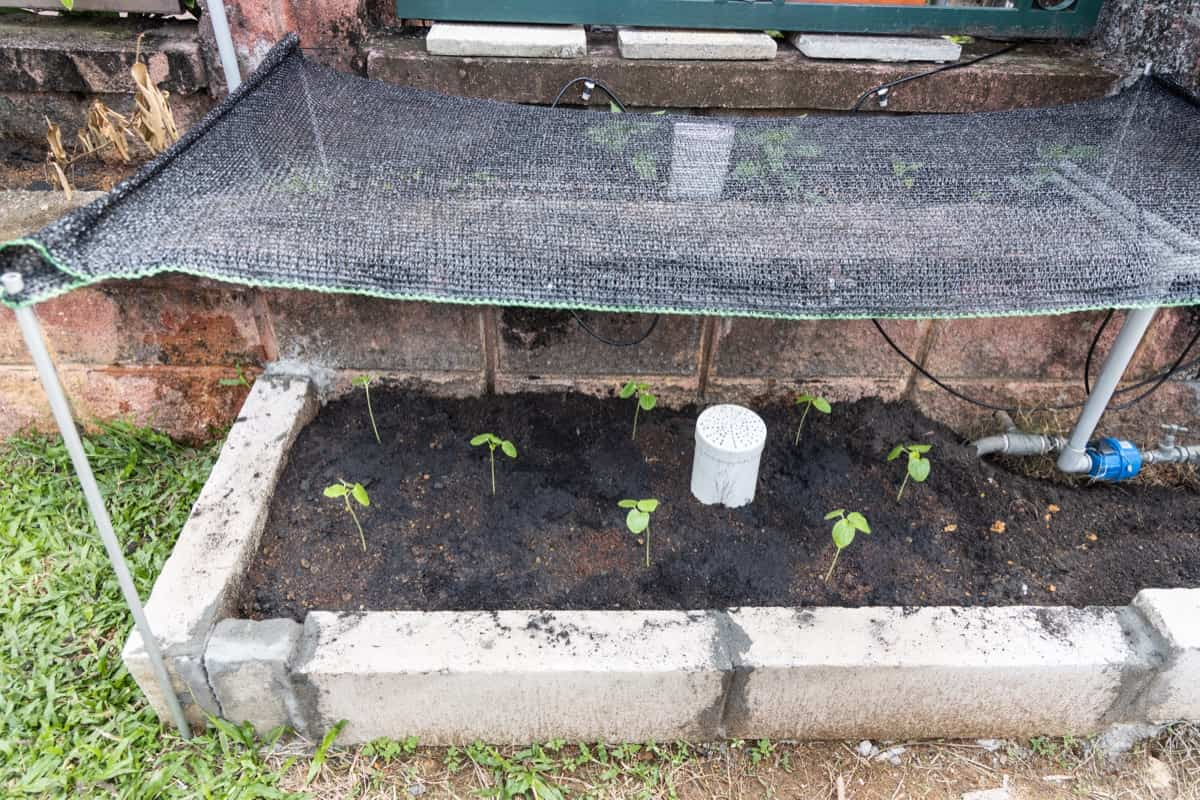
Conclusion
Covering your bed with a stylish garden bed cover is a great way to add visual interest and extra protection from the elements. One of the best things about using garden bed covers is that they can be used year-round. This is especially valuable in climates where cold weather can damage plants if planted outside in late fall or early winter.
If you live in a climate where cold weather is not an issue, you can also use them to extend the growing season by keeping unwanted warm weather away from your plants. Several different types of garden bed covers are available on the market today, so there’s sure to be one that will fit your needs. Some covers are made of fabric material, while others are made of plastic or metal sheets. Whatever type of cover you choose, ensure it fits properly so that water and dirt don’t leak through it.
- Flower Garden Designs and Layouts for Beginners
- Planting and Spacing Techniques in Papaya: A Beginner’s Guide
- Growing Gold: Essential Techniques for Planting Pineapples
- How to Make Kalanchoe Plant Bushy: Home Remedies and Solutions
- 11 Reasons Why Your Gardenia is Not Blooming: Home Remedies and Solutions
- Eco Elegance: The Guide to Designing a Drought-Tolerant Landscape
- Gardening on a Slope: Strategies for Hillside Landscaping
- Nourish and Flourish: Top Organic Mulches for Thriving House Plants
- Everything You Want to Know about Indian Mogra Flower: Discover Uses and Growing
- Green Thumb Success: Expert Tips for Cultivating Greenhouse Pumpkins All Year Round
- Maximize Growth & Flavor: The Ultimate Guide to Companion Planting in Herb Gardens
- How to Control Rhododendron Problems Naturally: Home Remedies and Organic Ways to Fix Them
- Natural Magic: The Remarkable Benefits of Cinnamon for Plants
- Best Steps to Revive Dying Tulip with Natural and Organic Treatment
- 10 Reasons Why Your Angel Trumpet is Not Blooming: Remedies and Treatment
- How to Fix Periwinkle Leaf and Flower-Related Problems: Natural Remedies and Solutions
- How to Fix Zinnias Leaf and Flower Problems: Discover Natural and Home Remedies
- Organic Steps to Induce Lemon Tree Flowers: A Comprehensive Guide
- Bloom Booster: Crafting the Perfect Homemade Bougainvillea Fertilizer
- Optimizing Growth: A Guide to Applying NPK Fertilizer for Potted Plants
- 10 Best Homemade Fertilizers for Rubber Plant: DIY Recipes and Application Method
- How to Boost Female Pumpkin Flowers: Effective Steps for More Flowers and High Yields
- Transform Your Indoor Garden: Top Benefits of Pink Salt for Houseplants
- 10 Best Homemade Fertilizers for Peacock Plants (Calathea): Easy DIY Guide
- Unlock Blooms: 9 Reasons Why Your Potted Chrysanthemum is Not Blooming
- 8 Reasons Why Your Potted Hibiscus is Not Blooming: Fix it with Simple Solutions
- Unlock Blooms: 9 Key Reasons Your Potted Frangipani Won’t Flower
- 10 Reasons Why Is My Ice Plant Not Blooming: Remedies and Treatment
- 10 Reasons Why My Potted Hydrangea Not Blooming: Treatment and Remedies
- 10 Reasons Why is My Wisteria Not Blooming: Remedies and Treatment
- 10 Reasons Why is My Goldfish Plant Not Blooming: Remedies and Treatment
- Maximize Your Space: Ultimate Guide to Balcony Gardening with Grow Bags
- 10 Reasons Why Your Iris is Not Blooming: Remedies and Treatment
- 10 Reasons Why Your Anthurium Plant is Not Blooming: Treatment and Remedies
- 10 Reasons Why Your Aquaponic Plants Are Not Flowering: Remedies and Treatment
- 10 Reasons Why Your Agapanthus is Not Flowering: Remedies and Treatment
Your blog post was thought-provoking and well-articulated. I enjoyed the unique perspective you brought to the topic and the thoughtfulness with which you addressed different angles. Thanks.